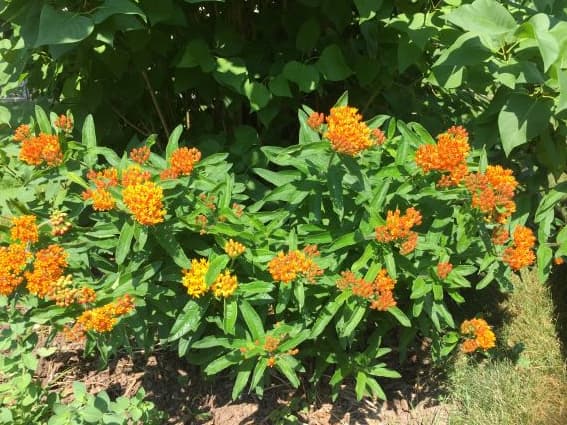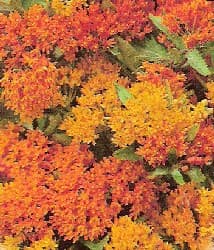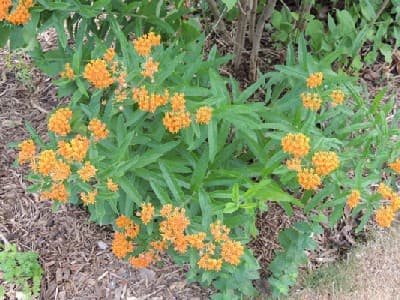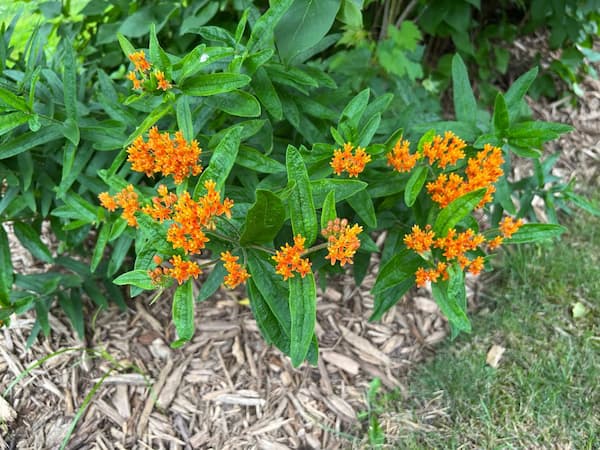How to Grow Butterfly Flowers

Growing Butterfly Flowers in Your Home Garden
The Butterfly Flower is a perennial flower that, as its name implies, attracts butterflies. It is also commonly called the butterfly weed, milkweed, and butterfly milkweed. Unlike other milkweeds, the sap is not milky. It is native to the U.S., east of the Rocky Mountains. Although, today, it’s grown in every state. Learn “How to Grow Butterfly Flowers from seeds to bloom” with this guide and you will be attracting beautiful butterflies before you know it!
Importantly, this guide is for the butterfly flower, not the butterfly bush. They are two different flowering plants.
Bright orange flowers bloom in mid-summer. The blooms sit atop plants that grow 24″ – 36″ Tall. After blooming, seeds form in light green pods.
Butterfly flowers look great in flower beds, rock gardens, or container plants. They are good as cut flowers. Make sure to plant them where you can see butterflies floating to them in a light breeze. Monarch butterflies and other butterflies feed on foliage. Many butterflies will be attracted to the nectar of open blooms.
Butterfly Flower Plant Specifications
Flower Colors: Orange flowers is the most common. There is also a yellow variety.
Flowers Bloom: Late Spring to summer.
Plant Height: Two to three feet tall.
Light Requirements: Full sun to partial sun.
Ideal Soil pH: 6.0 – 8.0.
Hardiness Zone: 3 – 9. This versatile plant grows well in most hardiness zones.
Toxicity: Most parts of this plant are toxic. Keep them away from children or pets.
Native To: North Amderica.
Plant Type: Perennial
Botanical Name: Asclepias Tuberosa
Other Names: Butterfly Weed
Are Butterfly Flowers Edible?
NO!!
Most parts of this plant are toxic. Keep them away from children or pets.
Butterfly Flower Medicinal Uses
There are no known medicinal uses for this toxic plant.

Plant Light Requirements
The light requirement for this plant is versatile. Grow Butterfly Flower plants in full sun to partial shade. The plant is a good candidate for shade gardens as long as it is not deep shade. They grow best in areas where they receive full morning sun and shade in the afternoon, especially in hot regions of the country.
Perennial Butterfly Flower Plant Propagation
This plant is grown from seed. Sow Butterfly flower seeds directly into your flower garden. Plant them 1/8″ to 1/4″ deep. Or, start them indoors six to eight weeks before the last frost. They do not like wet soils, So, slightly elevate the planting site.
You can also dig out the replant the tuberous roots. It’s much easier than planting butterfly flower seeds and then waiting for the seedlings to germinate and grow.
Days to Germination: 14-28 days.
Tip: If started indoors, use a germination mat to help speed seed sprouts.

How to Grow Butterfly Flower Plants
The low-maintenance, perennial Butterfly Flower plant likes full to partial sun. The ideal spot offers full morning sun and shade in the afternoon. The plants are long-lived, so select a location where they can thrive for many years.
These plants prefer rich and loose, well-drained soil. These plants are drought tolerant. They do not like heavy, clay soils that retain a lot of moisture.
The plants are tolerant of dry soil conditions. Water them only in the driest conditions.
Plants set out this year, will bloom the following year. Place them in a location where they can grow undisturbed for many years.
Adding a general-purpose fertilizer once or twice during the season will help to promote maximum growth and bloom. We recommend one fertilizer feeding a couple of weeks before blooming. The pre-bloom feeding should be high in phosphorous.
After the plant reaches several inches tall, pinch back the growing tips of the stems. This produces a bushier, more attractive plant.
For a neat and tidy appearance, add a layer of mulch around the plants. But, keep the mulch away for the stem of the plant. Mulch helps to retain soil moisture and it fertilizes the plant as the mulch decomposes.
Butterfly Flower requires little maintenance. Once established, they will thrive all season long. In the fall, the plant will die back to ground level. The following spring, new sprouts will appear from the tuberous roots.

Pruning Butterfly Flower Plants
As mentioned previously, pinching back the growing tips early in the season, results in a bushier plant. Otherwise, pruning is not required.
Remove any dead or sickly looking leaves and stems.
Insects and Plant Disease
Insect and disease problems are not too common. Apply an insecticide or a fungicide, only if a problem occurs.
Also, the plant’s roots can rot in prolonged wet soil.
Also see: Plant Problems – causes and cures.
Related Articles
People who read this article also like:
More on How to Grow Butterfly Plants – by Garden Hobbies
Please support our site. Shop for:
- rmmatthews100@hotmail.com
- 585-721-6528
- Rochester, NY
©1999-2024 GardenersNet.Com, All Rights Reserved

